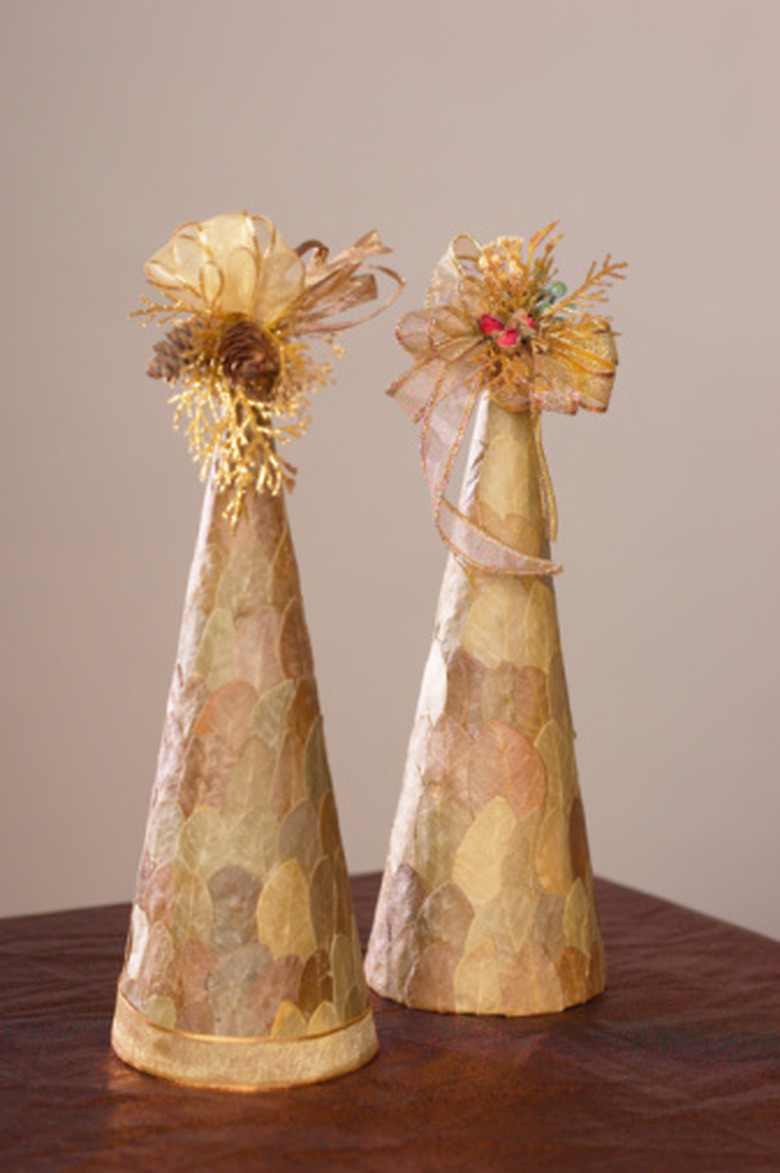Math Equations For Volume & Surface Area
Three-dimensional solids such as spheres and cones have two basic equations for calculating size: volume and surface area. Volume refers to the amount of space the solid fills and is measured in three-dimensional units such as cubic inches or cubic centimeters. Surface area refers to the net area of the solid's faces and is measured in two-dimensional units such as square inches or square centimeters.
Rectangular Prism
Rectangular Prism
A rectangular prism is a three-dimensional shape whose cross-sections are always rectangular. A rectangular prism has six sides, one of which is identified as the base. Examples of rectangular prisms include Lego blocks and Rubik's cubes. The volume of a rectangular prism is given in two equations: V = (area of base) * (height) and V = (length) * (width) * (height). The surface area of a rectangular prism is the sum of the area of its six faces: Surface Area = 2_l_w + 2_w_h + 2_l_h.
Sphere
Sphere
A sphere is the three-dimensional analogue of a circle: the set of all points in three-dimensional space that are a certain distance from a central point (this distance is called the radius). The equation for the volume of a sphere is V = (4/3) πr^3, where r is the radius of the sphere. The surface are of a sphere given by the equation S.A. = 4πr^2.
Cylinder
Cylinder
A cylinder is a three-dimensional shape formed by parallel congruent circles (a soup can is a real-world cylinder). The volume of a cylinder is given found by multiplying the base circle's area by the height of the cylinder, which results in the equation V = πr^2*h, where r is the radius and h is the height. The surface area of the cylinder is found by adding the area of the circles that form the lid and the base of the cylinder to the area of the rectangular "label" of the cylinder's body, which has a height of h and a base of 2πr when unwrapped. The equation for the surface area is therefore 2πr^2 + 2πrh.
Cone
Cone
A cone is a three-dimensional solid formed by tapering a cylinder's sides to form a point at the top (think of an ice-cream cone). The reduction in volume caused by this tapering results in a cone having exactly one third of the volume of a cylinder with the same dimensions, resulting in the equation for the volume of a cone: V = (1/3)πr^2h.
The equation for the surface area of a cone is more difficult to calculate. The area of the base of the cone is given by the formula for the area of the circle, A = πr^2. The body of the cone forms a sector of a circle when unwrapped. This sector's area is given by the formula A = πrs, where s is the slant height of the cone (length from the cone's point to base along the side). The equation for the surface area is therefore Surface Area = πr^2 + πrs.
Cite This Article
MLA
Wallulis, Karl. "Math Equations For Volume & Surface Area" sciencing.com, https://www.sciencing.com/math-equations-volume-surface-area-8589960/. 24 April 2017.
APA
Wallulis, Karl. (2017, April 24). Math Equations For Volume & Surface Area. sciencing.com. Retrieved from https://www.sciencing.com/math-equations-volume-surface-area-8589960/
Chicago
Wallulis, Karl. Math Equations For Volume & Surface Area last modified August 30, 2022. https://www.sciencing.com/math-equations-volume-surface-area-8589960/
